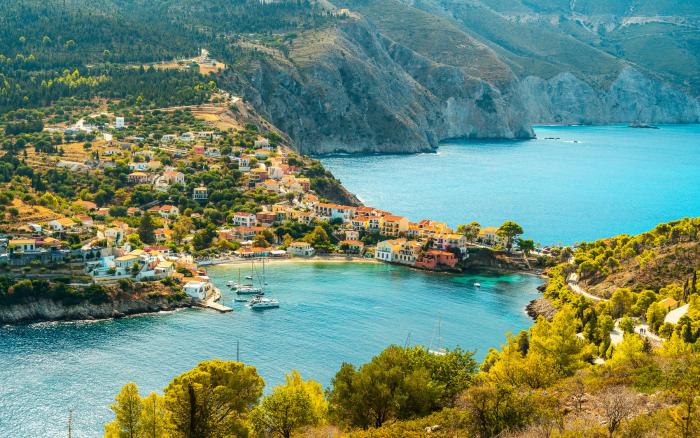
Island facts
Kefalonia, the island where the Municipality of Sami is located, is partially interconnected with mainland Greece's electricity grid via an undersea power cable. This interconnection is part of the Ionian Islands Interconnection project (Kefalonia, Zakynthos, and Ithaca). The connection helps stabilize the island's electricity supply, particularly during high-demand periods such as summer, when tourism significantly increases energy consumption.
However, Kefalonia still relies on local electricity generation in cases of disruptions or maintenance of the undersea cable. This electricity is primarily supplied by privately owned backup power stations, which use fossil fuels (mainly diesel) to meet the island’s energy needs. While necessary in emergencies, this reliance on fossil-fuel-based power is costly and environmentally burdensome.
The interconnection between Kefalonia and the mainland enhances energy stability. Nevertheless, like other Ionian islands, the island has limited energy autonomy, particularly when the interconnection is unavailable due to faults or maintenance. Private power stations are activated during such times, as there are insufficient energy storage solutions or locally produced renewable energy sources to compensate for the shortfall.
Increasing local renewable energy production and implementing energy storage solutions—such as large-scale battery systems or pumped hydro storage—are crucial to reduce this dependency on fossil fuels. Expanding solar and wind energy capacity can also help improve energy resilience.
Sami, one of the most important towns in Kefalonia, is located on the northeastern coast and serves as the island’s largest port, playing a key role in transportation and tourism. According to the 2021 census, Sami has 1,078 permanent residents. However, the population increases significantly during the summer, reaching approximately 6,000 people due to the seasonal influx of tourists.
Sami’s strategic location and tourism-driven economy make sustainable energy development even more critical. The combined energy demand for Kefalonia—including electricity, heating/cooling, and transportation—is estimated at 150–200 GWh annually. This highlights the need for targeted sustainability initiatives to ensure a reliable and environmentally friendly energy supply.
As part of Kefalonia’s and Greece’s broader energy transition strategy, Sami envisions a future based on sustainability, self-sufficiency, and resilience. The key pillars of this transition include:
- Integration of Renewable Energy Sources (RES): Developing solar farms, solar thermal systems, and small-scale wind energy installations.
- Improving Energy Efficiency: Upgrading building insulation, transitioning to LED street lighting, and implementing smart energy management technologies.
- Development of Sustainable Transport: Promoting electric mobility, improving public transportation, and encouraging soft mobility options like cycling.
- Local Energy Storage Solutions: Deployment of large-scale battery systems and pilot projects for pumped hydro storage.
These initiatives align with national and EU-wide decarbonization policies and contribute to the region's long-term economic and environmental sustainability. At the same time, they enhance Sami and Kefalonia's attractiveness as green and sustainable tourism destinations.
